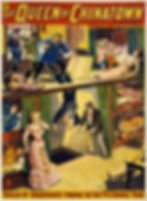The Evolution of Graphic Design: From Pencils to Pixels
- Ishan Das
- Sep 24, 2024
- 4 min read
Updated: Sep 28, 2024
"Design is not just what it looks like and feels like. Design is how it works." – Steve Jobs
Graphic design has come a long way, from hand-drawn sketches on paper to intricate digital creations on screens. It’s a journey that spans centuries, from the time when artists used brushes and ink to communicate visually to today’s world of high-tech software and sleek pixels.
Let’s take a ride through the evolution of #graphicdesign and see how this art form has transformed, blending the traditional with the digital to shape the world around us.
The Pencil: The First Design Tool
Back in the day, graphic design didn’t even have a name. It was just “art.” But whether you were an artist in ancient Egypt creating hieroglyphs or a Renaissance painter designing frescoes, the pencil (or its equivalent) was your best friend. It was how you translated ideas from your head onto a surface.
"Every artist was first an amateur." – Ralph Waldo Emerson

The pencil is where it all started—creating the foundation for the entire design process. Even today, designers often start with a simple sketch. It’s where raw ideas are born and given shape before becoming polished, digital masterpieces.
Did You Know? The earliest forms of graphic design can be traced back to cave paintings dating around 30,000 BC. These drawings were the first examples of visual communication—humans using images to tell stories and share ideas.
The Printing Press: Design Goes Public
Fast forward to the 15th century, and enter the printing press—the game-changer. Invented by Johannes Gutenberg, it allowed artists and designers to produce work in bulk for the first time. Posters, flyers, and books became mass-produced. Typography became a crucial part of design as well, with fonts crafted meticulously by hand.
"The press is the best instrument for enlightening the mind of man, and improving him as a rational, moral, and social being." – Thomas Jefferson

Before the digital age, the printing press was the bridge between handmade art and mass communication. Suddenly, design wasn’t just about drawing but also about making things readable, clear, and reproducible. The birth of the #printingpress revolutionized the design world, setting the stage for what was to come.
The Industrial Age: Posters and Ads Take Over
As the 19th century rolled around, design became more commercial. The Industrial Revolution brought the rise of advertisements, posters, and brand logos. Graphic design started to find its place in marketing and business. Think of vintage Coca-Cola posters, old-school travel ads, and those retro movie posters. These designs were hand-drawn, but they were created for mass consumption.
Fun Fact: The first logo ever trademarked? The Bass red triangle, in 1876. It’s one of the earliest examples of brand identity.
This era was all about attention-grabbing. Designers learned how to use bold fonts, bright colors, and strong compositions to create visuals that could sell. It was the birth of commercial design as we know it.

Enter the Digital Age: Design Meets Technology
And then... the digital revolution happened. The rise of computers in the late 20th century completely transformed graphic design. No more inks, no more paint. Designers now had software like Adobe Photoshop and Illustrator at their fingertips, allowing them to create, manipulate, and perfect designs faster than ever before.
"We shape our tools and thereafter our tools shape us." – Marshall McLuhan
The shift from pencils to pixels was monumental. Designers went from spending hours manually drawing and cutting to having infinite control over color, layout, and typography at the click of a mouse. Everything became faster, cleaner, and more efficient. And the best part? You could undo your mistakes with just one keystroke!
Did You Know? The first version of Adobe Photoshop was released in 1990. Since then, it has become the go-to tool for graphic designers around the world, helping them create everything from digital artwork to complex branding elements.
Design Today: Merging the Old and New
Today’s graphic design world is a beautiful blend of old-school creativity and cutting-edge technology. Many designers still start with a sketch on paper, letting their ideas take shape organically. But once that pencil lifts off the page, it’s time for the digital tools to work their magic.
"Good design is good business." – Thomas Watson
With software like Photoshop, Illustrator, and InDesign, designers can create anything—from minimalist logos to complex illustrations. And with the internet, design has become a global language. From websites to social media ads, graphic design now plays a central role in shaping the way brands communicate.

The Future of Graphic Design
So, what’s next? AI, VR, and 3D design are taking over. Designers are no longer limited by two dimensions—they’re building immersive worlds. AI-driven tools are now helping designers create faster by suggesting design elements or generating complete layouts in minutes. But even with all this technology, the essence of design remains the same: communicate a message visually, whether it’s through a logo, a website, or an interactive experience.
"The future belongs to those who believe in the beauty of their dreams." – Eleanor Roosevelt
As we look to the future, one thing is clear—design will keep evolving. New tools will emerge, but the creative spirit that started with a pencil will always be at the heart of great design.
Wrap-Up: The Art of Adaptation
Graphic design’s evolution from pencils to pixels shows us one thing—designers are incredibly adaptable. They’ve always found ways to embrace new tools, new techniques, and new technologies, all while keeping creativity at the center. Whether you’re sketching out your next big idea or tweaking pixels on a screen, remember this: design is about more than just tools—it’s about the story you tell.
So, grab your pencil or fire up your design software—wherever you’re starting, you’re part of the ongoing evolution of graphic design.